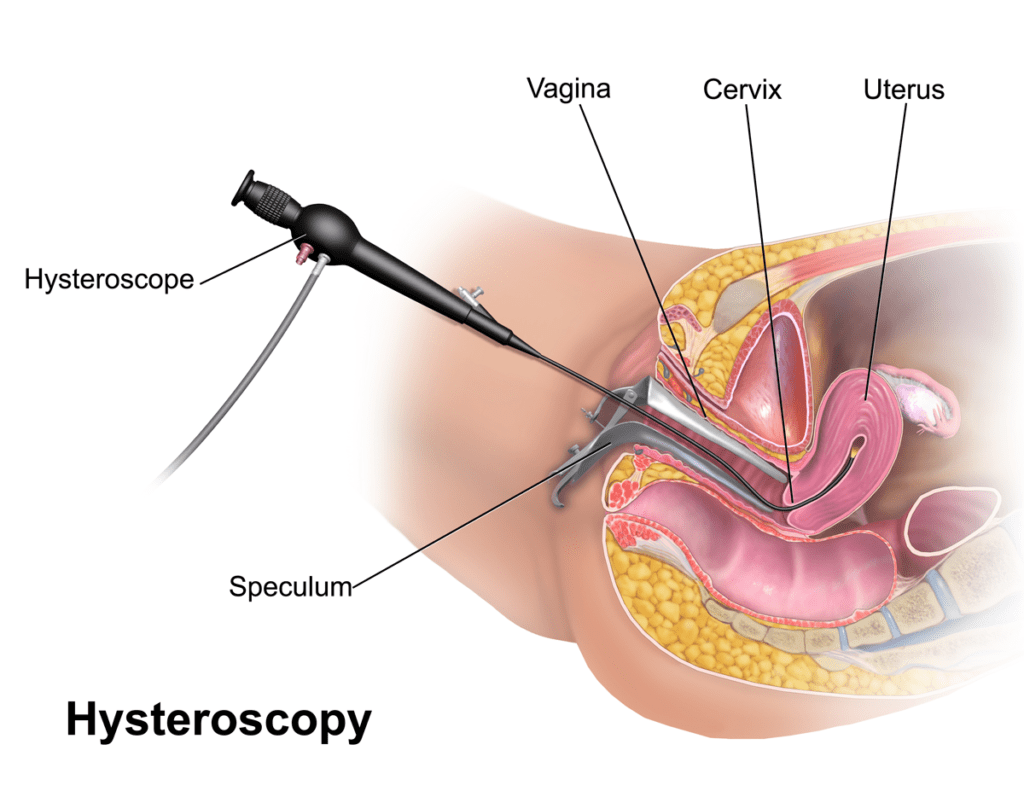Hysteroscopic Surgeries
A hysteroscopy is a procedure in which we put a Hysteroscope inside the uterus and directly visualize interior of the uterus.
Hysteroscope is a tubular instrument usually 3 – 6 mm diameter. It has attachment for the light source (helpful in visualization of the interior of uterus), for distension medium and camera. The camera in turn is connected to the monitor where we can see the hysteroscopy being done.
Generally uterus is collapsed cavity and to see it internally it needs to be distended. Various distension media are used to distend the uterus like normal saline, Carbon-di- oxide gas, Glycine, mannitol etc.
We use normal saline for diagnostic procedures and glycine for operative procedures as a distension media.
We recommend hysteroscopy for one of the following reasons
Diagnostic hysteroscopy: To find out cause of abnormal bleeding, cause of infertility, malignancy (Cancer) etc.
Therapeutic procedures like excision (removal of) small polyps growths, fibroids etc.
To break or treat scar tissue (adhesions) within the lining of your womb.
Before inserting an intra-uterine system (IUS), or coil, or to remove it if it has moved out of place.
Now a day’s hysteroscopy is done to carry out a permanent form of contraception (sterilization).
Procedure:
Hysteroscopy is done under general anaesthesia after proper consent ( official document to be signed by the patient and her relative saying that the patient is ready for the procedure on her own will against any external force or compulsion) is taken. Before posting patient for hysteroscopy we do certain investigations(blood tests, ECG,X Ray etc) to know if patient if fit for anaesthesia or not. Office hysteroscopy is done under local anaesthesia or without anaesthesia.
Usually the procedure is preferred to be done immediately after the monthly period is over and bleeding is stopped, but it can be done irrespective of menses.
Once anaesthesia is given, lithotomy position is given to the patient. Cervix (mouth of the uterus) is visualized and it is dialated as per the hysteroscope to be used or procedure to be performed.
Hysteroscope is inserted with the distension medium is on and cavity in side uterus is seen on monitor. The desired procedure is carried out. Once the procedure is complete hysteroscope is removed.
Office hysteroscopy is often done as an outpatient procedure, especially if it’s diagnostic procedure just to diagnose the problem.
After hysteroscopy, recovery is usually in a day or two. Majority of the hysteroscopy patients can go home same day and can resume their work on next day.
It’s normal to have some mild period-like cramping pains and some bleeding for a few days after hysteroscopy. We prescribe some medications to prevent infection, painkillers, and antacids.
Most women don’t have any problems after having a hysteroscopy. However, some problems mentioned below are abnormal and patient should consult doctor if any of these develops.
Heavy bleeding that lasts for longer than 12 days.
Vaginal discharge that is dark or smells unpleasant.
Severe pain or pain that lasts for more than 48 hours.
A high temperature.
Complications: Complications are when problems occur during or after your procedure, but most women don’t get any complications after a hysteroscopy. The following are possible complications of hysteroscopy.
A tear (perforation) in the wall of your uterus or your cervix caused by the instruments used to look inside. If this happens, patient may need further surgery to repair any damage caused.
Excessive bleeding during or after your hysteroscopy.
Absorbing too much of the fluid used to open up your womb during your hysteroscopy. This can make you feel confused, and have seizures. Infection inside your uterus can be treated by antibiotics.


